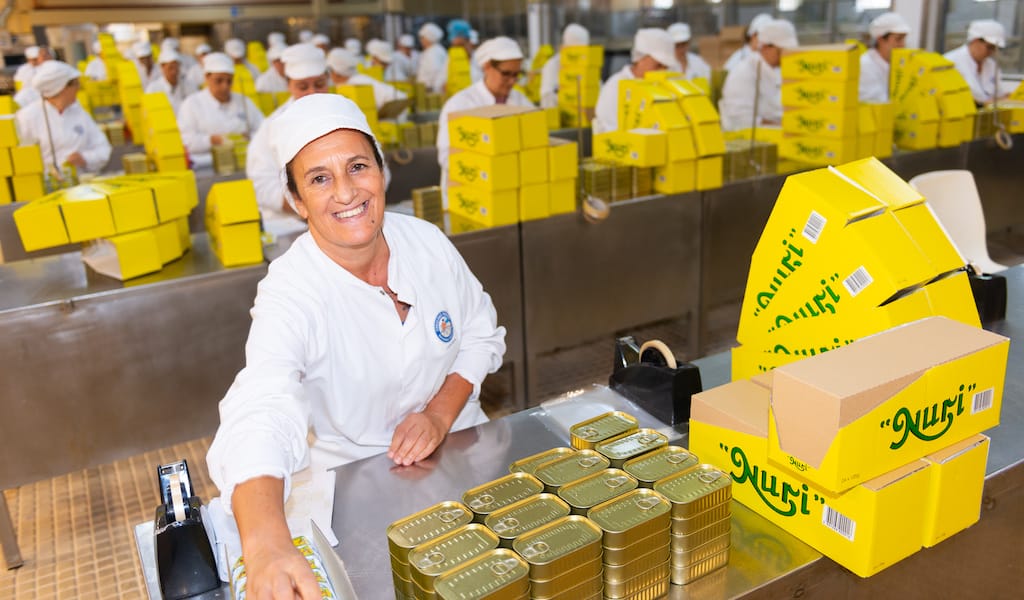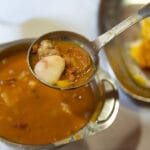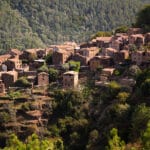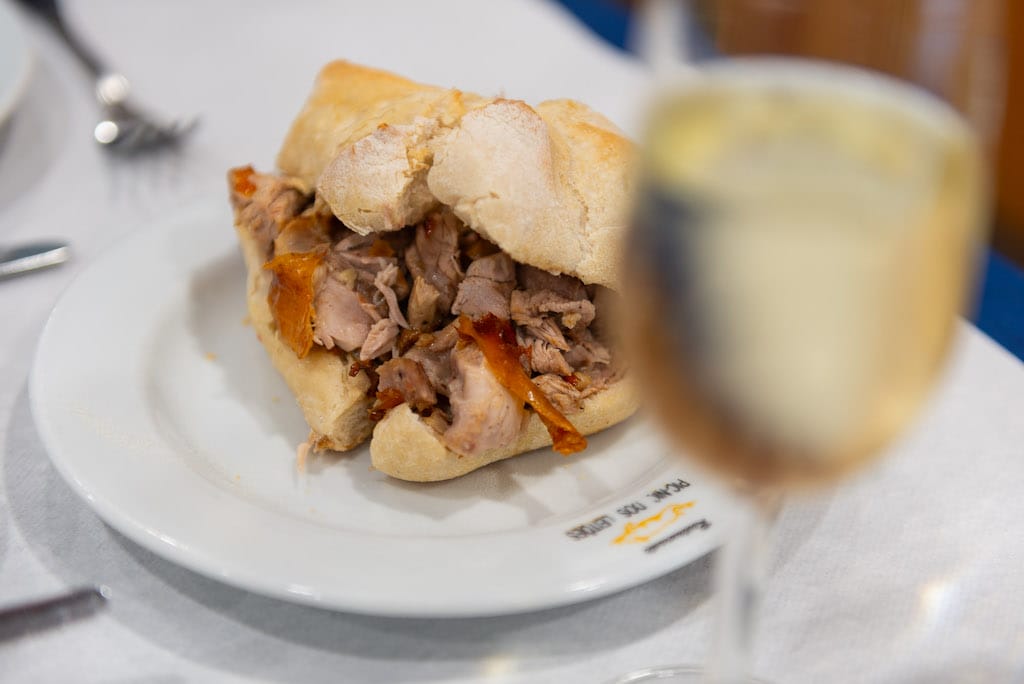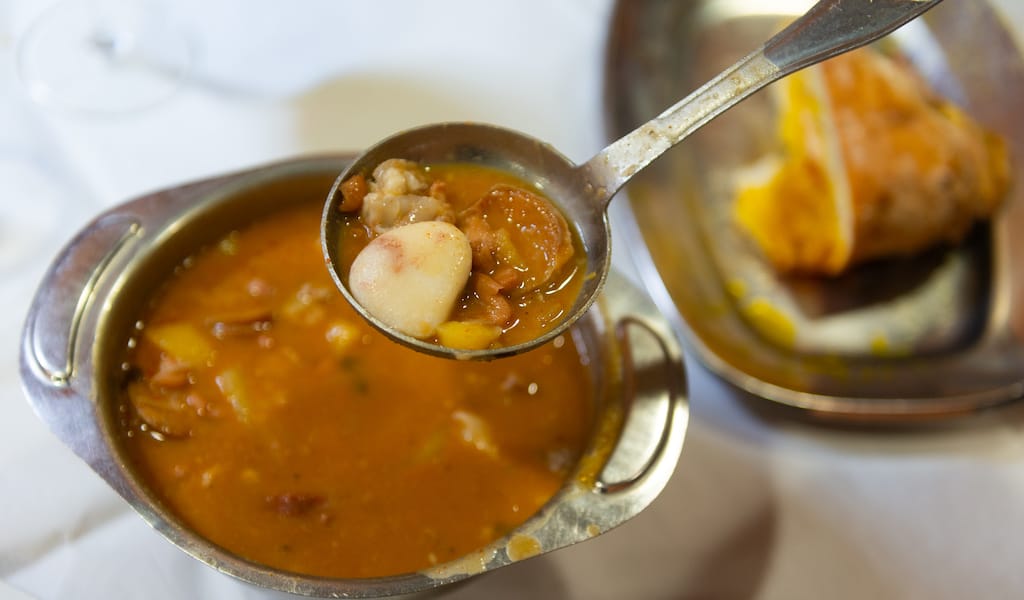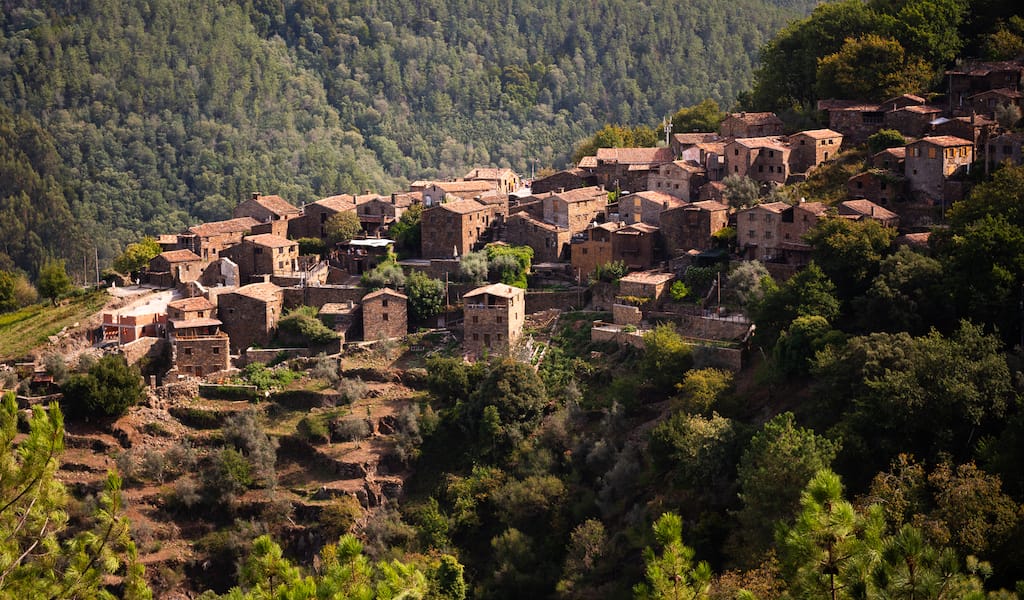Matosinhos, it could be said, has seen better times. In its heyday, the semi-industrial-feeling port city just north of Porto was once home to 54 fish canneries. Today, only two remain. Along the city’s wide, empty-feeling streets, some of the city’s former factories and their graceful Art Nouveau facades have been reappropriated as other businesses – we saw more than one startup – while in many cases, they have simply been abandoned. But at Pinhais, one of those remaining canneries, it feels like little has changed. As it’s done since 1920, having weathered both good and bad times in Matosinhos, the company is producing some of the best tinned seafood in Portugal.
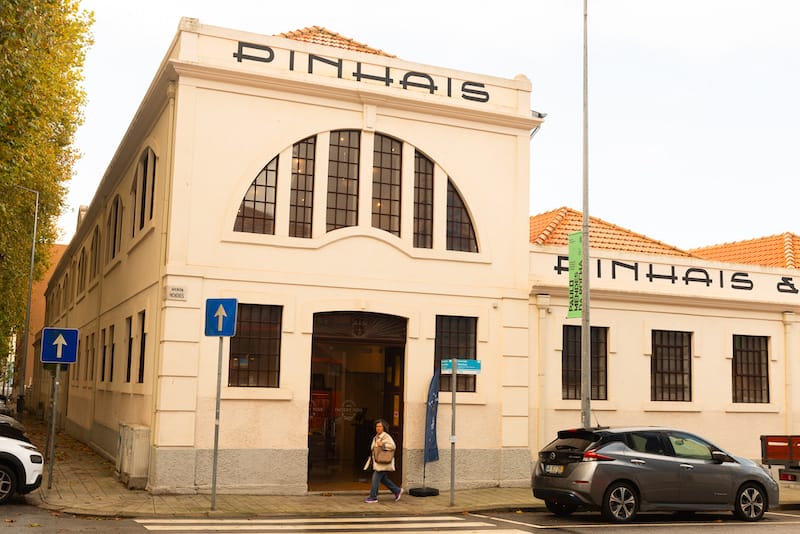
Before World War II, there were 152 fish canneries in Portugal. But in the 1960s, advances in refrigeration led to a crash in tinned seafood production (for more on the history of Iberian tinned seafood, see our previous article about conservas in Galicia, Spain). As companies in Matosinhos scrambled to modernize, they took loans from banks that they were unable to pay back, and one by one, closed their doors. Pinhais, all the while, quietly continued to do things the old way.
“Our innovation is not to innovate,” explains Patrícia Sousa, Pinhais’s former marketing director. “That’s a legacy we can’t forget.”

This conservative approach has seemingly worked, and in 2020, the brand turned 100. To celebrate, they renovated the factory, adding a shop and a café, and turning their 1920-era lobby and offices into a living museum. They have also opened their doors to factory tours. Guided visits kick off in that vintage lobby, with stops in a charmingly stuck-in-time clinic (Pinhais still employs an in-house doctor) and offices before moving to the factory floor. It’s here that a team of 143 staff – nearly all women, a vestige of the days when men were at sea – make as many as 25,000 tins a day.
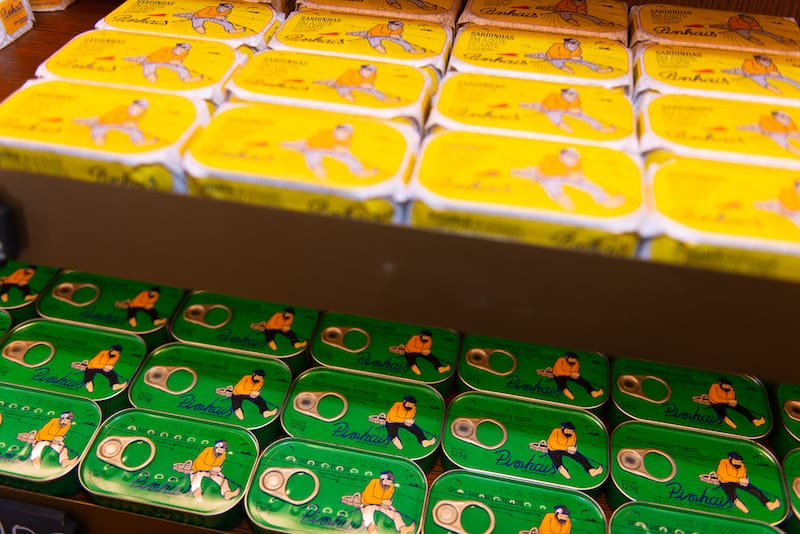
The tins produced here span two main product lines: Pinhais, which is generally for domestic consumption, and which revolves around high-quality fish from Matosinhos; and Nuri, generally for export, and that can include fish from elsewhere along Portugal’s coast. Generally speaking, only three types of fish – sardines, mackerel and horse mackerel – make it into tins at Pinhais, which are preserved in four different ways: in olive oil, spiced olive oil, tomato sauce or spiced tomato sauce. Each can is the result of 12 steps, a time-consuming process that the company refers to as “artisanal and traditional,” as many of the techniques and even much of the equipment haven’t changed much in the last century.
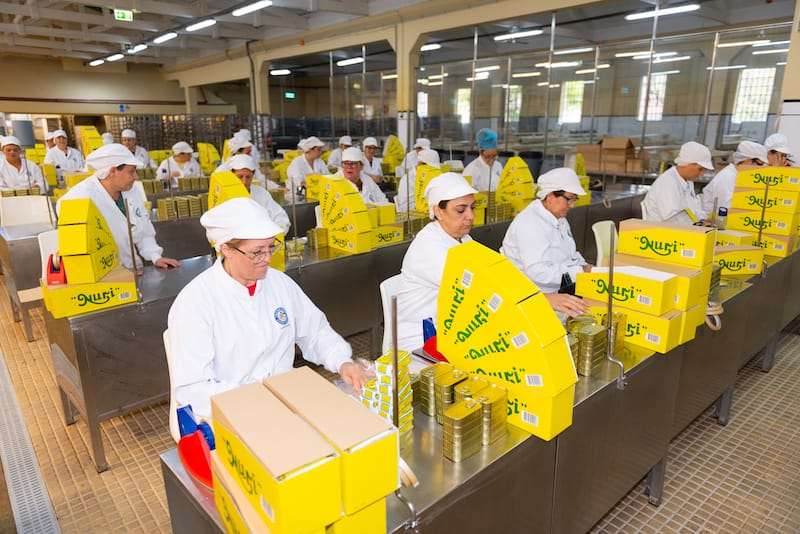
The first step is sourcing raw materials, a task done by Pinhais’s purchaser, Emília Braga.
“I buy fish every day, from May to October,” Emília tells us, referencing the government-sanctioned fishing period. Generally she buys fish from the auction at Matosinhos pier, located mere minutes from the factory. If the quantity or quality isn’t there, she’ll also buy from markets in Sines or Peniche, farther south along Portugal’s coast.
We ask her what she looks for in a fish.“I look at the scales – they’re proof that the fish is firm. Then I look at the size of the loin; I want it to be thick and fat. If the eyes are red, that’s no good,” she says.
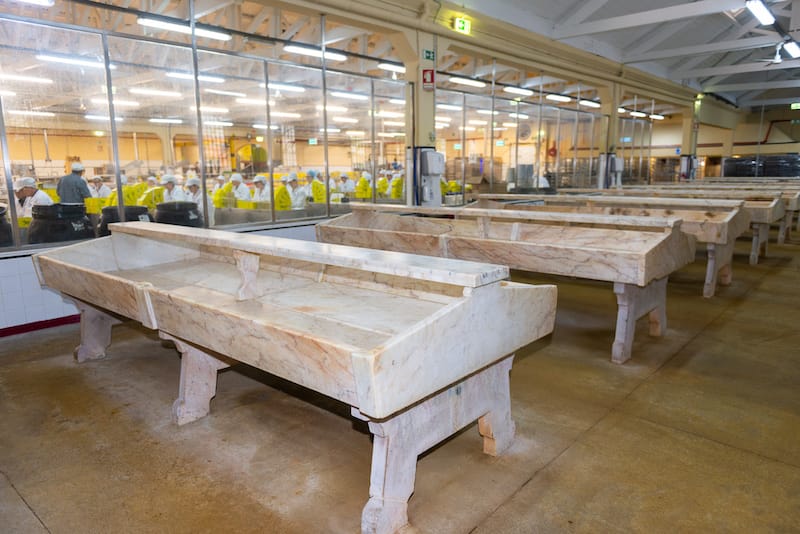
Pedro Casas, Pinhais’s current marketing manager, adds that 2023 wasn’t a particularly great year for fish. He and Emília tell us that this year’s catch yielded small fish, and as a result the factory did not opt to make any Nuri “Reserve,” the line’s premium product.
The fish, purchased that morning, are delivered to Pinhais, where they’re put in a brine for a half hour, an effort to plump them up. (On the day we visited, rough seas had put a pause on fishing, meaning that no raw fish were being processed.) The fish are then trimmed on the factory’s original marble tables – the heads and intestines removed in one swift move – before being rinsed and placed on wire racks.
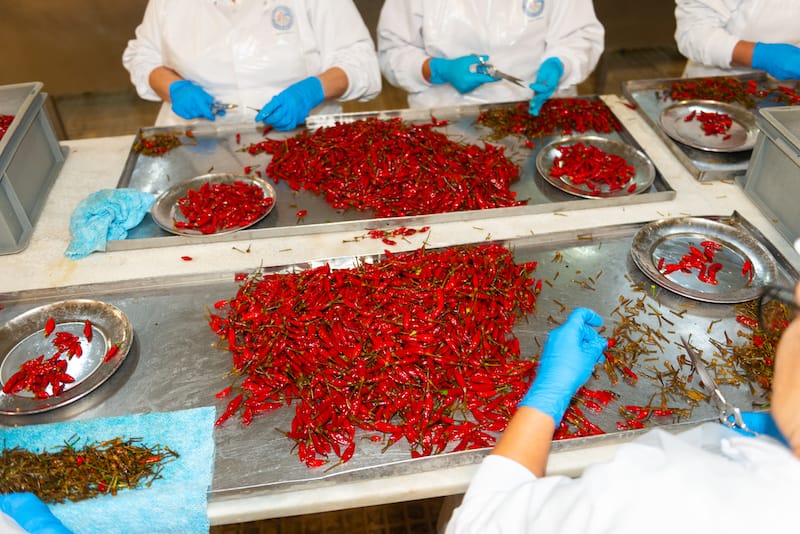
Next, the fish are steamed. This step is somewhat unusual in the tinned fish world, where fish are often “cooked” directly in their cans in the course of being sterilized. While the just-steamed fish cool on the wire racks, the staff typically head out for their lunch break.
The next few steps involve preparing the non-fish ingredients that go into the tins. Each Pinhais or Nuri spiced tin includes exactly one brined chili, one slice of carrot, one slice of pickled cucumber, one piece of bay leaf, one clove and one or two peppercorns – a recipe that’s been followed since the beginning. As with all steps in the process, the factory floor staff generally tackle each of these jobs together in a daily rotation, an effort to avoid boredom and repetitive tasks.
These ingredients are placed in every can by hand, followed by the fish, which are trimmed to fit. The tins are then topped with olive oil (or tomato sauce), sealed, and are sterilized. That sterilization is, in effect, the second “cooking,” which according to Patríca, provides the fish with a soft texture and “melts” the bones. The sealed, sterilized tins are then sent to the warehouse to mature.
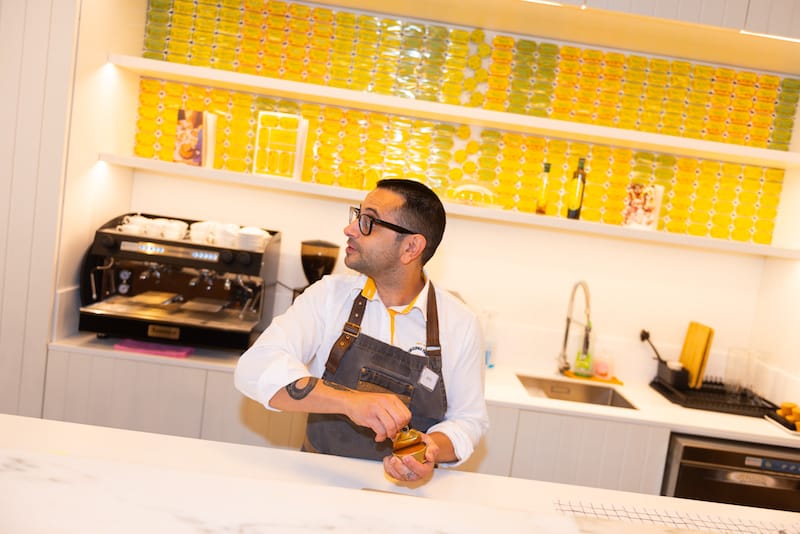
“A product is never sold that day,” Patrícia tells us. “We age them at least 90 days. It’s like a stew, it improves with time!”
The final step involves wrapping the tins in their distinctive labels, at which point they are ready for supermarket shelves. Yet like port wine, another emblematic product from Portugal’s north, most of these tins will be sent abroad.
“In Portugal, we don’t eat tinned fish a lot,” says Patrícia, explaining that locals prefer fresh seafood. “Portuguese people only buy five percent of what we produce.”
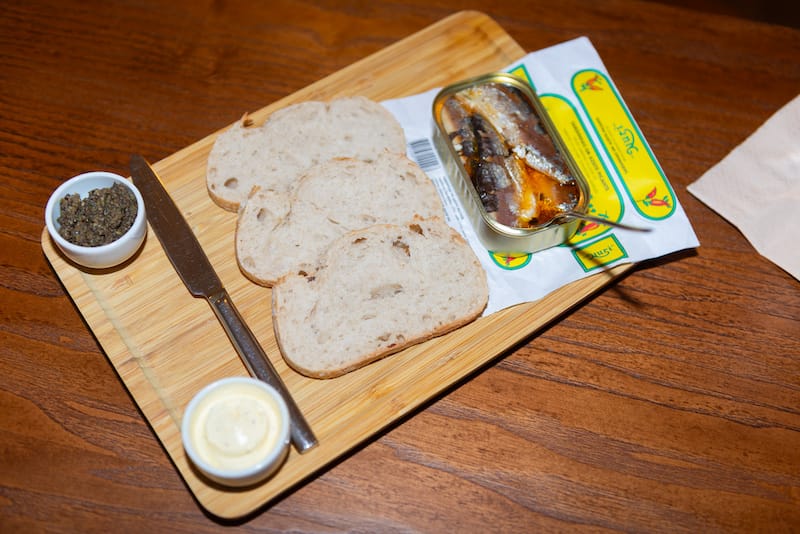
She tells us that 60 percent of the factory’s exports are bound for Austria, where the Nuri brand has something of a cult status – there’s a Nuri shop in central Vienna, where in addition to tinned fish, Nuri merch, including t-shirts, aprons and even socks, is sold.
We move from the factory to the gift shop, where the company’s entire line of tins is for sale (and where Nuri-branded socks are finally available in Portugal), and end our visit at the shiny new upstairs café. There, we’re presented with an open can of Nuri sardines in spicy olive oil. We prod the sardines with a fork and they’re fatty and tender, the bite revealing the chili, carrot, cucumber, bay leaf and spices hiding underneath. We tear off a hunk of bread and dip it in the olive oil, which has taken on the characteristics of all of these elements, a transformation that happened in a few months but that actually stems from a century of tradition.
Austin BushAustin Bush
Published on December 07, 2023
Related stories
February 7, 2024
PortoAt first glance, there’s not much to see in Mealhada, a town in Portugal’s central inland Bairrada region about an hour’s drive south of Porto. If there is a main feature here, it’s probably the EN1, the country’s original north-south highway, which slices the town in half, providing a conduit for a seemingly never-ending parade…
January 19, 2024
LisbonIt’s an early example of guilt tripping. The story goes that a monk arrived in a Portuguese village, hungry and clever. He grabbed a rock and carried it door to door, claiming that it was his only ingredient, asking people if they would be kind enough to supplement it so he could make a meal.…
November 23, 2023
Porto“It’s not enough,” says the waiter at O Pascoal. We had inquired if one dish would be sufficient for three people, and his reply is immediate, firm and confident. We take his advice, order another, and the two dishes are easily enough for six people (we are three). We are in Fajão, an aldeia do…







































